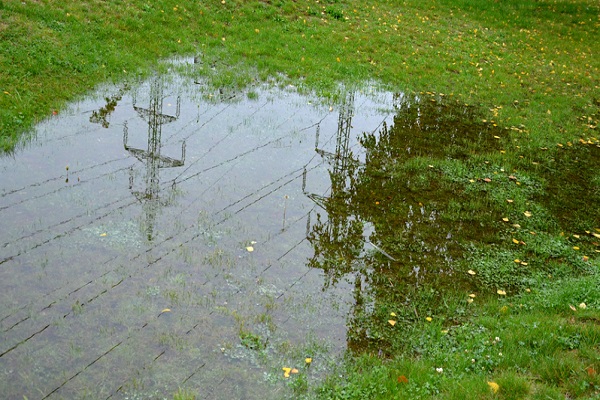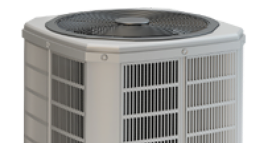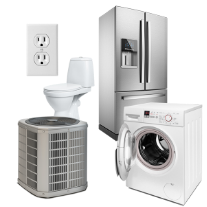If your lawn has standing water, it can create several issues: mosquitos, mold, and even structural damage to your home. Here are some causes and solutions if you have standing water on your lawn.
Cause #1: Sloping Terrain
Your lawn might have small peaks and valleys. When rain falls or snow melts, the water might pool in the valleys in your lawn.
Solution #1: Do Some Landscaping
Depending on the location of where the water pools, you have a couple landscaping options.
- Add groundcover plants to help soak up and redirect water runoff
- Contact a professional to install retaining walls or terraces
Avoid displacing the water in other places, which can cause similar damage as having the standing water in the spot you’re trying to fix.
Cause #2: Clogged Drains or Leaky Sprinkler Systems
Over time, debris can clog drains in your yard. Likewise, if you have a sprinkler system, a leaking, cracked, or burst pipe can cause standing water to pool.
Solution #2: Call a Professional
If the problem is a clogged drain or damaged sprinkler system, you’ll likely need professional help.
For damaged sprinkler systems, make sure you turn the system off so water doesn’t continue to leak and pool. This will prevent standing water and higher water bills.
Cause #3: Improperly Placed Downspouts
The downspouts of your gutters should always drain water away from your home’s foundation. But improper placement, displacement, or damage can cause water to drain in places it shouldn’t.
Solution #3: Reroute or Replace Gutters and Downspouts
In many cases, your downspout is simply displaced by things like wind, accidentally bumping it, or animals. If this happens, simply pop a downspout attachment on the end and have it route away from your home.
You can also use flexible extenders to more accurately reroute your downspouts away from your home.
However, if the gutter system was improperly installed, you may need to call a professional to fix it.
Cause #4: Poorly Draining Soil
Harder soils, like clay, can take forever to drain water. They can also cause runoff, which creates even more potential for pooling.
Solution #4: Amend Your Soil
If you have clay soil in your yard, there are a couple ways to amend it for better drainage.
- Aerate your lawn: There are several different tools you can use to aerate your lawn, from shoes with spikes on them to rentable aeration machines. Aeration helps break up harder soils, giving them more room to drain.
- Add manure, mulch, compost: These additives can help soften your soil and reduce how much water it retains.
Cause #5: Overwatering
Watering your lawn too much can easily cause standing water. In addition, it can have a cascading effect of damage.
If you overwater, it can lead to root rot, which kills your lawn. Oversaturation can invite viruses, bacteria, fungus, and other problems that spread throughout your yard. And of course, overwatering could do damage to your foundation, if it gets close enough to it.
Solution #5: Water Less
See how your lawn does with less water. If you notice that standing water disappears but your grass starts to dry out or die anyway, you may need to call a professional to assess drainage issues.
Getting a Diagnosis
Even if you don’t plan to hire a landscaping company to fix your drainage problem, you should still consider having one out to evaluate the problem. Ask them to examine the property, diagnose the issues, and submit an estimate. Even if you decide against professional assistance, this will help you determine the cause and consequences of the drainage problem.









